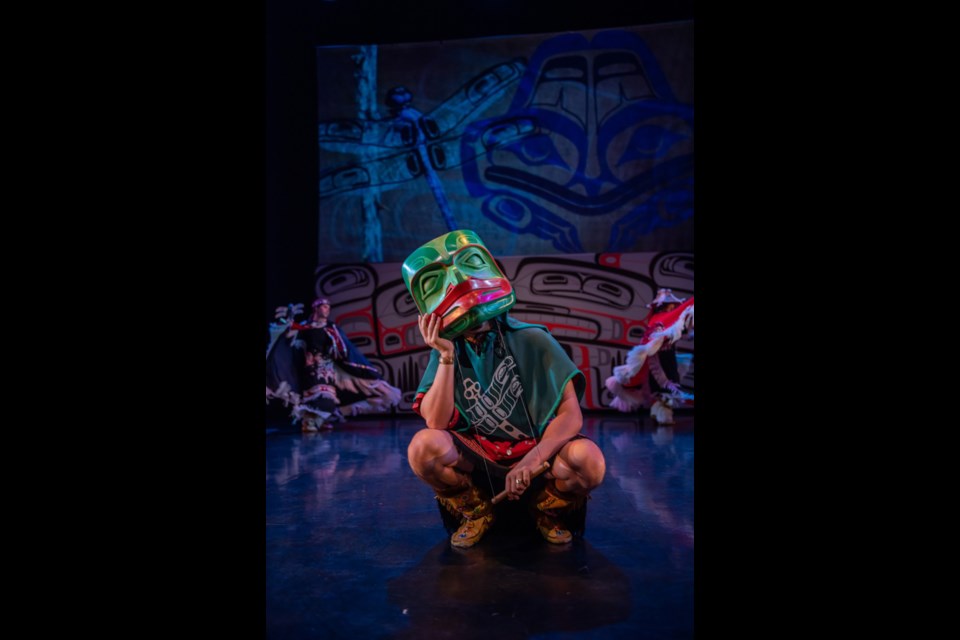Here’s a chance to see a dance performance with steps, music and stories from thousands of years ago.
The Indigenous dance company, Dancers of Damelahamid, will perform their original production, Spirit and Tradition, in the city, giving people a glimpse of an art form that has been passed down several generations within the Damelahamid family.
Damelahamid stands for “paradise” — and was "the name of the original city the family was from, in history," said Margaret Grenier, the executive and artistic director of the company. Grenier was born in a small community in the Northwest coast of British Columbia, and raised in a family that was already into reviving art and music as she was growing up.
Her parents started Dancers of Damelahamid in 1960 as a way to recover the wealth of art that they had lost in the years between 1885 to 1951 due to the 'Potlatch ban'.
Pronounced as paat-lach, Potlatch was a gift-giving ceremony among First Nations people along the Northwest coast. As part of the ceremony, there used to be dance, music and theatre, as mentioned in The Canadian Encyclopedia. But with the ban of the Potlatch, and thereby all the cultural events, much of the knowledge slipped away, during those 60-odd years.
Reviving an age-old artform
But Grenier’s parents decided to learn from whatever her grandma, who lived through the Potlatch ban, remembered. “That was part of the revitalization of the dance form,” she said. While her gran wasn’t necessarily a dancer, “it was really the knowledge of the eldest” at the time. Even the dancers who were probably young before the ban, were already elderly themselves, she said.
“So it was based on their memories and their ability to teach, to guide and to get the younger dancers to dance again.”
Grenier trained under her parents, and grew up with songs and dances passed down from her ancestors. But her biggest challenge as a choreographer has been to understand her dance form — “to really understand what makes it specifically the Indigenous dance from for the Gitxsan and Cree people, in order to be able to create and compose within this form.”
She and her husband took over the dance company from Grenier’s parents in 2003, and have travelled around the world showcasing their productions.
Today, Dancers of Damelahamid has about 12 members — consisting of Grenier, her husband, their children and their two grandchildren, some nieces and nephews, and a few others welcomed by Grenier’s parents into the family many years ago.
The youngest member is only three years old, but she has already been on stage — though carried in a toddler pouch by one of the other dancers.
“She's growing up with them, and now she's starting to imitate and dance on stage as well,” said Grenier.
It’s not unusual within their dance practice to include kids even before they can walk, said Grenier. Dance is after all, “a lived practice and something that our young people are immersed in from a very young age.”
Dance, as she put it, is a “family practice.”
“And the dances convey stories that represent our connection as Indigenous people to our lands here on the West Coast, and the values that have been passed on from one generation to the next,” she said.
Dance as a lived practice
“They are created to mark significant events in our histories, and to convey teachings that go with that event. And usually, they are to teach care for the environment, and also as a community, for one another,” added Grenier.
These values are conveyed through dances that use a traditional “touch step”, costumes that largely use colours such as red and black that were traditionally sourced from natural materials — red from red ochre, and black from burnt charcoal from the alder tree — and use of traditional masks, which represent beings that are “connected to both the natural and the human world.”
Besides the traditional regalia and the masks, the company has evolved the dance to include multimedia projections and other innovative mediums to convey their stories when performing before diverse audiences — be it in South America, Shanghai or Dubai.
Their dance production, Spirit and Tradition, is one among four they introduced over the years, and the one that will be shown in New West on Nov. 18 and 19. “It's been very well received [around the world]. It's the piece that can really, you know, translate to a festival setting. And it’s very accessible to all audiences.”
Though it's pure entertainment for audiences, personally, for Grenier, dance is a form of healing “at many levels.”
“It certainly is a very healthy practice that brings together young people and older people and families. And that itself is a way to come together in a way that’s very positive,” she said.
But more importantly, the dances convey important teachings — “teachings that go all the way back to our origin in heaven.”
“They remind us how to live our life in a good way that honours that origin.”
Watch Spirit and Tradition by Dancers of Damelahamid at the Anvil Theatre on Nov. 18 and 19.




